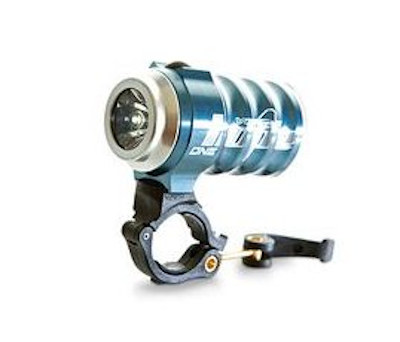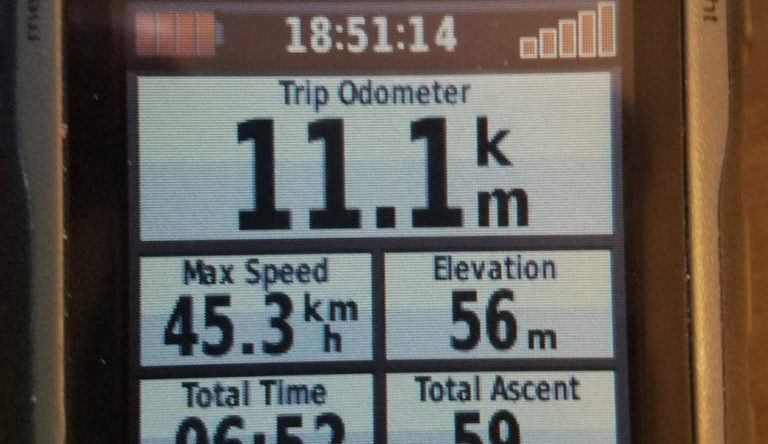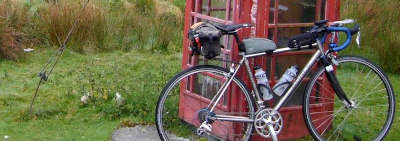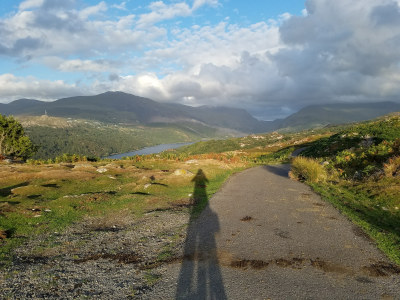James Thinks
writing is a kind of thinking
As LEDs have become cheaper and brighter in recent years, there's been a proliferation of bike lights, which makes choosing one difficult. Many of them can be had for under ten pounds but there are also plenty of premium super-bright rear lights available. For those with a particular obsession with gadgets, Garmin have created a light which uses radar to detect approaching cars, adjusting the light and warning you via your GPS display. Sounds fun, but I find it hard to believe it would make me any safer than listening for approaching cars. For deaf cyclists, I imagine it would be very helpful.
My search for the perfect rear light
I try to keep it simple. I need a reliable light that will keep me safe on long rides including audaxes in all kinds of conditions. There are other, more comprehensive bike light comparisons out there. This article is limited to the few (OK, quite a few now I list them) that I've tried. So far I've not quite found the perfect light for every situation, but I've tried some really good ones, each with different drawbacks.
Criteria
My preferences may differ from others, but here's an explanation of what I'm looking for and my thinking behind it. I tend to carry a rear light on every ride in case I'm delayed by a mechanical problem or just want extra daylight visibility. I do use a dynamo front light for longer rides, but I've not got around to rigging a rear light up to this as well. Even if I did, I'm sure if want a spare in case it failed for any reason.
AA/AAA batteries: I always use lights with rechargeable AA or AAA batteries. The main reason is that, in an emergency, spares can be bought anywhere. Pretty much any corner shop or late-night service station will stock AA and AAA, albeit the non-rechargeable kind. I prefer rechargeable batteries (usually Eneloops) as I feel like less of an environmental criminal. Obviously, if I get caught out, I'm not going to put myself at risk and ride illegally, I'll hold my nose and buy whatever they have. Plenty of USB-rechargeable lithium-ion lights claim to last 20+ hours, which should be enough, but lithium ion batteries tend to wear out after a few years and usually can't be replaced. If I forget to charge it or find the cell is losing its mojo, I don't want to discover that on a Welsh mountain pass at 11pm. Sure, I could take a USB charger with me, but it's quicker and easier to simply swap the batteries. There are more AAA rear lights available than AA, although I prefer AA (also known ad LR6 or Mignon). Most of the electronics I have on the bike, including my GPS, takes AA batteries and they'll typically last well, though this depends on the light. As they're all the same type, I can carry fewer spares.
Night time visibility: In the UK it's a legal requirement to have lights and reflectors after dark. A rear light for riding in the dark doesn't need to be especially bright, but the illuminated area (the height and width of the light itself) should be large or there should be several lights separated by some distance. This can help drivers to judge your position and speed. This is harder with flashing lights, but they are more easily noticed, especially in busy urban environments. So a combination of different lights seems the best approach to me. Also, bright flashing lights can be dazzling to other road users, especially when riding in groups, so any way to reduce this is a good thing.
Daylight visibility: Being seen by road traffic during the day is just as important and there's some research which shows a reduction in accident rates for bicycles with daytime running lights. These lights are about getting you noticed. Once you've been noticed, it should be easy for driver with the benefit of daylight to judge your location and speed. With all that daylight to compete with, a daytime running light should be small and bright, possibly flashing. Many lights include a lens which focuses the light into a narrower cone within which it can be seen over a long distance. However, if used at night, unless these are adjusted carefully, which isn't always possible, they can be unpleasant for following cyclists and even drivers. Drivers who are part-blinded or infuriated are not much better than those who haven't seen you.

Robustness: Aside from the obvious frustration of having a light fail, longer rides mean a potentially long stretch in the dark without a light if one should fail. The vast majority of rear lights with replaceable batteries have a battery compartment which is kept shut with stiff plastic clips. These are often opened by wedging a coin into a slot and twisting. This bends the clips a little, popping the case open. There are several problems with this. First is that the clips often break, especially in cold weather which can make the plastic brittle.

Secondly, sometimes they're too loose and the light falls apart when you ride over a bump, dropping half of it in the road, often unnoticed. There are various bodges to work around this, including elastic bands and tape, but they make changing the batteries more of a faff. The better solution is a battery compartment that is closed with a screw. The other aspect of robustness is waterproofing. When it's raining you need the light more than ever and I've heard plenty of reports of leaky lights. Luckily, all the ones I've tried have kept the water out so far but there are numerous reports of otherwise good lights malfunctioning in rain. -
Lights I've tried

Smart Superflash 0.5W, 2xAAA
http://www.chainreactioncycles.com/smart-superflash-1-2-watt-rear-light/rp-prod56546 A basic and popular light. Two modes, flashing and constant. Above average battery life. Bright enough main LED for daylight use. Can be dazzling. Plastic clips can come undone when bumped. Others have reported water ingress issues.
Cheapness: 8/10
Robustness: 6/10
Visibility by day: 8/10
Visibility by night: 7/10
Mounting options: 6/10
Battery life: 10/10

Smart Rl321r - 2 Red 0.5w Superflash, 2xAAA
http://www.halfords.com/cycling/bike-lights/bike-lights/smart-rl321r-0-5w-0-5w-2-red-0-5w-superflash-leds Features two very bright LEDs, lots of modes, including a slowly pulsing one which I guess may be less annoying to other riders. Plastic clips broke when opened at about 2 deg C. In the photos of recent models the clips look a bit sturdier, so maybe that has been improved (though it now has no pulsing mode!). Gives a good daylight flash for about ten hours on rechargeables.
Cheapness: 5/10
Robustness: 6/10
Visibility by day: 9/10
Visibility by night: 7/10
Mounting options: 6/10
Battery life: 7/10

Blackburn Mars 1.1, 2xAAA
http://www.blackburndesign.com/en_eu/mars-1-1-rear.html Not especially bright, so perhaps not the best daytime choice, but the 3 LEDs offer good all round visibility for longer than average. Haven't had any trouble with the plastic clips and basic rubber washer, but not really tested this in extreme conditions. Cost well under ten pounds.
Cheapness: 9/10
Robustness: 6/10
Visibility by day: 3/10
Visibility by night: 6/10
Mounting options: 6/10
Battery life: 10/10

Metro flash Dangerzone, 2xAAA
http://www.ebay.co.uk/itm/NEW-MetroFlash-Danger-Zone-Tail-Light-/171708741341 Probably the brightest light that runs on 2 AAAs at the time of writing. Really unpleasant to be behind. Despite the claims on the box (usually for alkaline batteries), I found it barely lasted two hours with rechargeables on constant mode. Could be good for a busy commute or in rain or fog. The plastic clips holding the battery compartment shut broke so I used an elastic band to hold it together. Once I forgot to do this and it split apart when I went over a bump losing the light and batteries. The button is easy to press when riding, but can also be accidentally turned on when in a bag or pocket.
Cheapness: 5/10
Robustness: 4/10
Visibility by day: 10/10
Visibility by night: 8/10
Mounting options: 6/10
Battery life: 2/10

Fibre flare shorty, 2xAAA
http://fibreflare.com/products/fibre-flare-shorty-red A rather different design featuring a bar of light with a battery compartment at each end. Can be bent slightly and mounted in all sorts of creative ways and helmets, bags, seat stays, etc. Comes in a few different colours. Not especially bright, but covers more area than most, so may make it easier to locate you at night. However it's almost useless in daylight. Rechargeable batteries last at least ten hours, more when flashing. Had slight water ingress problems until I smeared some silicon grease under the rubber caps. UPDATE: Bending by an enthusiastic child has stopped the light working. I might be able to fix it.
Cheapness: 4/10
Robustness: 5/10
Visibility by day: 2/10
Visibility by night: 8/10
Mounting options: 10/10
Battery life: 6/10

Cateye Omni 5, 2xAAA
http://www.cateye.com/intl/products/detail/TL-LD155-R/ A good all-rounder for about ten pounds. Five moderately bright LEDs and a clear/red plastic body mean it can be seen from every angle. 3 modes, one of which is a bit headache-inducing. Daylight visibility is ok and it runs bright enough on rechargeables when set to flash. The body is rather brittle and can easily fall apart going over a bump, ditching the batteries and half the light on the ground.
Cheapness: 8/10
Robustness: 6/10
Visibility by day: 5/10
Visibility by night: 8/10
Mounting options: 6/10
Battery life: 7/10

B&M Linetec senso, 1xAA
http://en.bumm.de/produkte/akku-ruecklicht/toplight-line.html
Probably my favourite rear light. It's the battery version of a popular dynamo light and can be set to always on or "senso" mode which turns on in the dark if the bike is moving. There's no flashing mode. When you stop it waits a few minutes before turning off. This prompts helpful people to tell you that you've left your light on whenever you park at night, but otherwise it's a nice feature that means less faff. It's a large "spatial" light with a wide reflector which glows at night, all of which should make it easy for drivers to work out how far away you are. It also means you're legally covered from a rear reflector point of view. The light shines evenly across a wide area so is visible from nearly 180 degrees without being dazzling. Daylight visibility is below average, but probably still worth using if you don't have another light. Amazingly a single rechargeable AA battery will keep it going for over 30 hours; I tested it at home. The main downside is mounting. It has two bolts spaced 80mm or 50mm apart and will fit nicely on most rear racks. If you don't have a rack there are are various ways to bodge it but, depending on your bike and luggage this may be a showstopper for some. It's a sensible, grown up light for tourers, commuters or anyone who knows they'll be riding a fair distance in the dark. Coupled with a small flashing light it is probably the best option.
Cheapness: 5/10
Robustness: 9/10
Visibility by day: 5/10
Visibility by night: 10/10
Mounting options: 4/10
Battery life: 10/10

Blackburn Local 20, 2xAA
http://www.blackburndesign.com/en_eu/local-20-rear-light.html This is a recent purchase that I've only used on a couple of rides so far. However it seems sturdy in spite of the common plastic clips closure. It's a bit bigger and heavier than most rear lights, but can still be mounted on a seatpost or bag. In a home test I got more than 24 hours of constant light out of it before it started to look a bit dim. There are also two flashing modes. Daylight visibility is poor due to the lack of a focusing lens leaving two tiny pin pricks of light that seem to get lost. At night however, the whole thing glows beautifully and is visible from a wide range of angles without being too dazzling. It fills a similar role to the B&M Linetec above, but is more compact. I may keep it handy as a backup light or place to store spare AA batteries in my bag. The RRP is about twenty pounds, but it can be found for less. UPDATE: This light fell apart, presumably when going over a bump, resulting in the light and batteries being lost. I think this was partly due to the angle it was at on a loose bag which might have created a "whiplash" effect adding to the downwards force. On my Carradice saddlebag it has been fine for a year or so. As they're only ten pounds I've bought another.
Cheapness: 7.2/10
Robustness: 7/10
Visibility by day: 4/10
Visibility by night: 9/10
Mounting options: 6/10
Battery life: 10/10
Conclusion
As you can see there are many decent lights out there so it's all a bit different horses for stroking different blokes' cats. Or something.
For any long ride I will have my B&M Linetec with me and I'm considering getting another for my commuting hybrid. I would also usually take the Smart Rl321r hooked onto my Carradice bag for daylight visibility or rain or fog. I also often pack the Mars 1.1 as a spare inside the bag, if only as a place to store spare AAA batteries for the Smart Rl321r. If I was travelling light after dark and only had space for one small light, I'd take the Local 20.

James Bradbury
I write about whatever is on my mind. I do so mostly to help me think more clearly. If other people find it interesting that's good too. :-)






